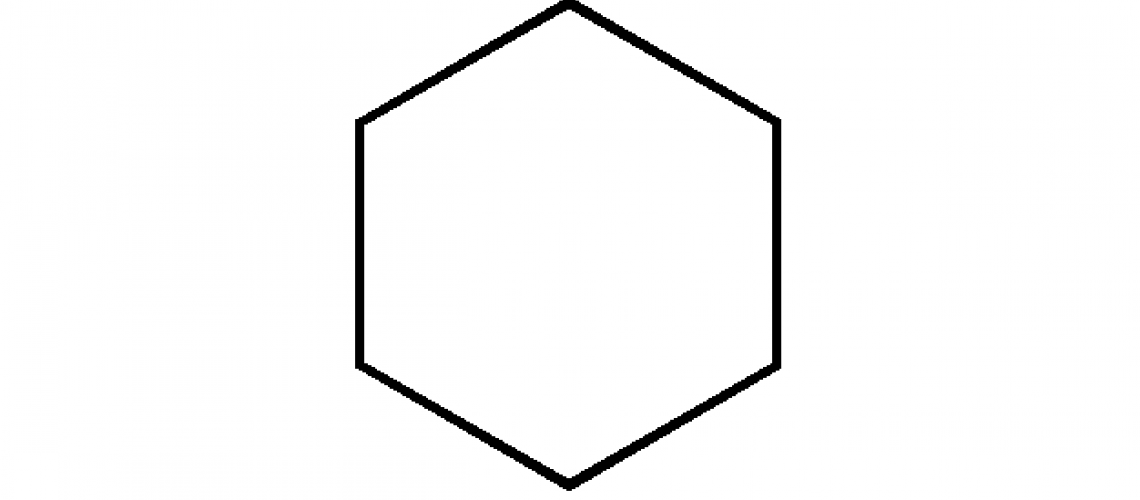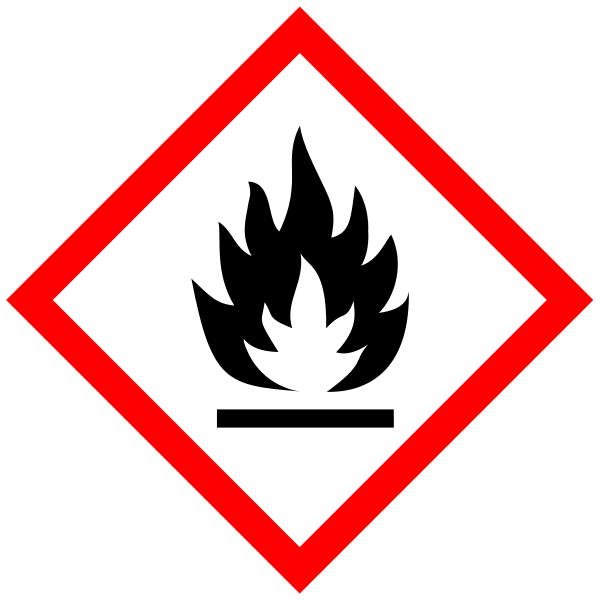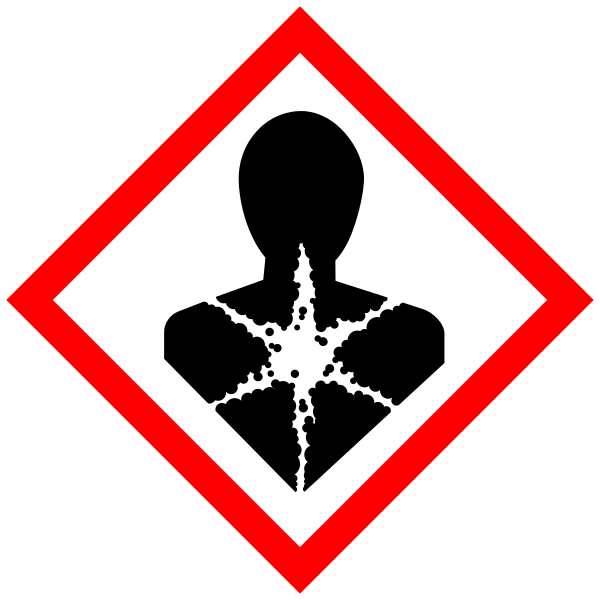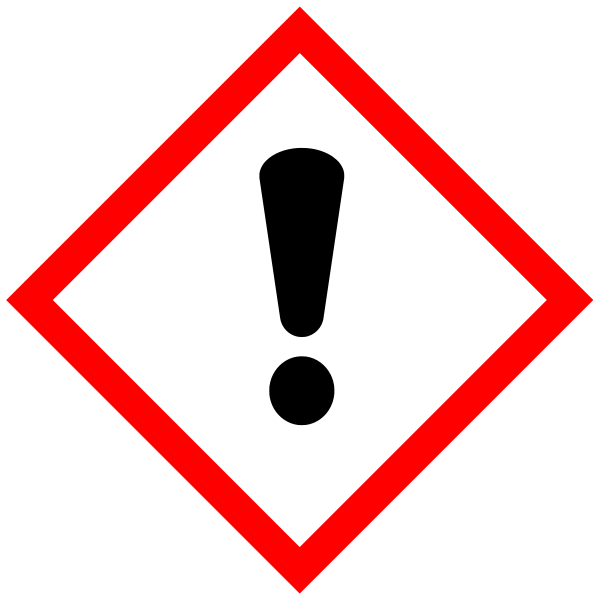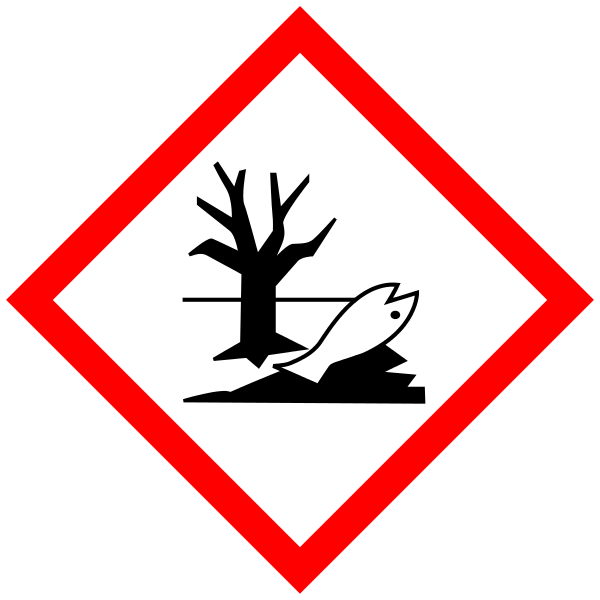Other names: hexanaphthene
Andere Namen: Hexahydrobenzol, Hexamethylen, Naphten, Zyklohexan
D’autres noms: -
Otros nombres: -
Altri nomi: -
Chemical formula | Formel | formule | fórmula | formula : C6H12
CAS Number | CAS-Nr. | No. CAS | número CAS | numero CAS: 110-82-7
PubChem: 8078
Properties | Eigenschaften | propriétés | propiedades | proprietà
Density, molar mass | Dichte, molare Masse | masse volumique, masse molaire | densidad, masa molar | densità, mass moleculare: 0,78 g/cm³, 84,16 g/mol [1]
Appearance: colorless liquid, sweet, gasoline-like odor [2]
Erscheinung:
farblos [1,6], charakteristisch riechend [1], milder, süsslicher, benzinähnlicher Geruch [6]
Apparence: liquide incolore [3]
Aspecto: líquido sin color
Aspetto: liquido incolore [5]
Refractive index | Brechungsindex | indice de réfraction |índice de refracción | indice di rifrazione: 1,42623 [1]
Boiling point| Siedepunkt | point d’ébullition | punto de ebullición | temperatura di ebollizione: 81°C [1]
Melting point | Schmelzpunkt | point de fusion | punto de fusión | temperatura di fusione: 6,72 °C [1]
Flash point | Flammpunkt | point d’éclair |punto de inflamabilidad | punto di fiamma: -17 °C [6]
Vapor pressure | Dampfdruck | pression de vapeur | presión de vapor | pressione di vapore: 104hPa (20°C) [1]
Evaporation rate | Verdunstungszahl | no. d’évaporation | no. de evaporación | no di evaporazione: 3 [6]
Solubility: Soluble in ether, alcohol, acetone, miscible with olive oil [2]
Löslichkeit: nahezu unlöslich in Wasser (60 mg/l bei 20°C) [1], geringfügig mischbar mit Wasser [6], in Ether, Alkohol, Aceton löslich [2 - ]
Löslichkeitsparameter fd/ fp/ fh: 94/ 2/ 4 [2,7]
Solubilité/ miscibilité: dans l’eau: nulle; soluble dans l’alcool, L’éther, L’acétone, miscible avec l’huile d’olive, 100 ml de méthanol dissout 57g à 20°C [3]
Solubilidad: immiscible con agua [4]
Solubilità: in acqua 0,055g/l a 293 K [5]
Applications | Verwendung | applications | uso | uso
As a solvent: Polystyrene (cyclohexane from 35 ° C), resins, lacquers [6], wax coatings (also mixed with toluene (75:25, 50:50, 25:75) [7]
Used for: Extraction of essential oils, spectroscopy [6]
Lösungsmittel für. Polystyrol (Cyclohexan ab 35°C), Harze, Lacke [6], Wachsüberzüge (auch in Mischung mit Toluol (75:25, 50:50, 25:75) [7]
Verwendet für: Extraktion etherischer Öle, Spektraskopie [6]
Comme solvant: polystyrène (cyclohexane à partir de 35 ° C), les résines, les laques [6], les revêtements de cire (également mélangés avec du toluène (75:25, 50:50, 25:75) [7]
Utilisé pour: Extraction d'huiles essentielles, spectroscopie [6]
Como disolvente: Poliestireno (ciclohexano a partir de 35 ° C), resinas, lacas [6], recubrimientos de cera (también mezclados con tolueno (75:25, 50:50, 25:75) [7]
Utiizado para: Extracción de aceites esenciales, espectroscopia [6]
Come solventi: Polistirene (cicloesano a 35 ° C), resine, lacche [6], rivestimenti in cera (anche miscelati con toluene (75:25, 50:50, 25:75) [7]
Utilizzato per: Estrazione di oli essenziali, spettroscopia [6]
Safety/ hazards | Gefahrenhinweise | précautions | peligrosidad | sicurezza
GHS signal word: Danger! Highly flammable, harmful, dangerous for the environment [2]
GHS hazard statements: H225 (100%): Highly Flammable liquid and vapor [Danger Flammable liquids - Category 2] [1,3,5,8]. H304 (100%): May be fatal if swallowed and enters airways [Danger Aspiration hazard - Category 1] [1,3,5,8]. H315 (100%): Causes skin irritation [Warning Skin corrosion/irritation - Category 2] [1,3,5,8]. H336 (98.99%): May cause drowsiness or dizziness [Warning Specific target organ toxicity, single exposure; Narcotic effects - Category 3] [1,3,5,8]. H400 (99.94%): Very toxic to aquatic life [Warning Hazardous to the aquatic environment, acute hazard - Category 1] [8]. H410 (98.96%): Very toxic to aquatic life with long lasting effects [Warning Hazardous to the aquatic environment, long-term hazard - Category 1] [1,3,5,8]
GHS precautionary statements: P210: Keep away from heat, hot surfaces, sparks, open flames and other ignition sources. No smoking.[1,5,8]. P233: Keep container tightly closed [8].
P240: Ground/bond container and receiving equipment [1,5,8}. P241: Use explosion-proof electrical/ventilating/lighting/…/equipment. P242: Use only non-sparking tools. P243: Take precautionary measures against static discharge. P261: Avoid breathing dust/ fumes/ gas/ mist/ vapours/ spray. P264: Wash … thoroughly after handling. P271: Use only outdoors or in a well-ventilated area. [8] P273: Avoid release to the environment [1,5,8]. P280: Wear protective gloves/protective clothing/eye protection/face protection [8]. P301+310: IF SWALLOWED: Immediately call a POISON CENTER/doctor/… [1,5,8]. P301+330+331: IF SWALLOWED: Rinse mouth. [1] Do NOT induce vomiting. [1,5,8] P302+352: IF ON SKIN: Wash with plenty of water/… [1,8] P303+361+353: IF ON SKIN (or hair): Take off immediately all contaminated clothing. Rinse skin with water/ shower. P304+340: IF INHALED: Remove person to fresh air and keep comfortable for breathing. P312: Call a POISON CENTER/ doctor/…/if you feel unwell. P332+313: If skin irritation occurs: Get medical advice/attention. P362: Take off contaminated clothing. P391: Collect spillage.
[8] P403+233: Store in a well ventilated place. Keep container tightly closed. [1,8] P403+235: Store in a well ventilated place. Keep cool.[5,8] P405: Store locked up. [8]
Permissible exposure limit (US health exposure limit): TWA 300 ppm (1050 mg/m3 [2]
Threshold limit value: 300 [2], 200 ml/m3 (Switzerland/DFG) or 700 mg/m3[1]
Sicherheitshinweise (SGA): leicht entzündlich, gesundheitsschädigend, reizend, umweltschädigend
H-Sätze: H225 Flüssigkeit und Dampf leicht entzündbar [1,3,5,8]. H304 Kann bei Verschlucken und Eindringen in die Atemwege tödlich sein [1,3,5,8]. H315 Verursacht Hautreizungen [1,3,5,8]. H336 Kann Schläfrigkeit und Benommenheit verursachen [1,3,5,8]. H400 Sehr giftig für Wasserorganismen [8]. H410 Sehr giftig für Wasserorganismen mit langfristiger Wirkung [1,3,5,8].
P-Sätze: P210 Von Hitze, heißen Oberflächen, Funken, offenen Flammen sowie anderen Zündquellenarten fernhalten. Nicht rauchen [1,5,8]. P233 Behälter dicht verschlossen halten [8]. P240 Behälter und zu befüllende Anlage erden [1,5,8]. P241 Explosionsgeschützte elektrische Betriebsmittel / Lüftungsanlagen / Beleuchtung / … verwenden. (Die vom Gesetzgeber offen gelassene Einfügung ist vom Inverkehrbringer zu ergänzen). P242 Nur funkenfreies Werkzeug verwenden. P243 Maßnahmen gegen elektrostatische Entladungen treffen. P261 Einatmen von Staub / Rauch / Gas / Nebel / Dampf / Aerosol vermeiden. P264 Nach Gebrauch … gründlich waschen. (Die vom Gesetzgeber offen gelassene Einfügung ist vom Inverkehrbringer zu ergänzen). P271 Nur im Freien oder in gut belüfteten Räumen verwenden. [8] P273 Freisetzung in die Umwelt vermeiden [1,5,8]. P280 Schutzhandschuhe / Schutzkleidung / Augenschutz / Gesichtsschutz tragen [8]. P301+P310 Bei Verschlucken: Sofort Giftinformationszentrum, Arzt oder … anrufen [1,5,8]. P301+P330+P331 Bei Verschlucken: Mund ausspülen. [1] Kein Erbrechen herbeiführen. [1,5,8] P302+P352 Bei Berührung mit der Haut: Mit viel Wasser / … waschen. (Bis zum Inkrafttreten der 4. ATP am 1. Dezember 2014: Bei Kontakt mit der Haut: Mit viel Wasser und Seife waschen.) [1,8] P303+P361+P353 Bei Kontakt mit der Haut (oder dem Haar): Alle beschmutzten, getränkten Kleidungsstücke sofort ausziehen. Haut mit Wasser abwaschen/duschen. P304+P340 Bei Einatmen: Die Person an die frische Luft bringen und für ungehinderte Atmung sorgen. P312 Bei Unwohlsein Giftinformationszentrum, Arzt oder … anrufen. P332+P313 Bei Hautreizung: Ärztlichen Rat einholen / ärztliche Hilfe hinzuziehen. P362 Kontaminierte Kleidung ausziehen. (Bis zum Inkrafttreten der 4. ATP am 1. Dezember 2014: Kontaminierte Kleidung ausziehen und vor erneutem Tragen waschen.)
P391 Verschüttete Mengen aufnehmen. [8] P403+P233 Behälter dicht verschlossen an einem gut belüfteten Ort aufbewahren. [1,8] P403+P235 Kühl an einem gut belüfteten Ort aufbewahren. [5,8] P405 Unter Verschluss aufbewahren. [8]
MAK-Wert: 300 [2], 200 ml/m3 (Schweiz/DFG) bzw. 700 mg/m3[1]
Atemschutzfilter: A (braun) [6]
Précautions (SGA): Danger! Inflammable, toxique, irritant, sensibilisant, narcotique, mutagène, cancérogène, reprotoxique, danger pour le milieu acuatique
Phrases H: H225 : Liquide et vapeurs très inflammables [1 3,,5,8]. H304 : Peut être mortel en cas d'ingestion et de pénétration dans les voies respiratoires [1,3,5,8]. H315 : Provoque une irritation cutanée [1,3,5,8]. H336 : Peut provoquer somnolence ou vertiges [1,3,5,8]. H400 Très toxique pour les organismes aquatiques [8]. H410 : Très toxique pour les organismes aquatiques, entraîne des effets à long terme [1,3,5,8].
Phrases P: P210 Tenir à l’écart de la chaleur/des étincelles/des flammes nues/des surfaces chaudes. — Ne pas fumer [1,5,8]. P233 Maintenir le récipient fermé de manière étanche [8}. P240 Mise à la terre/liaison équipotentielle du récipient et du matériel de réception [1,5,8]. P241 Utiliser du matériel électrique/de ventilation/d’éclairage/…/antidéflagrant. P242 Ne pas utiliser d'outils produisant des étincelles. P243 Prendre des mesures de précaution contre les décharges électrostatiques. P261 Éviter de respirer les poussières/fumées/gaz/brouillards/vapeurs/aérosols. P264 Se laver … soigneusement après manipulation. P271 Utiliser seulement en plein air ou dans un endroit bien ventilé. [8] P273 Éviter le rejet dans l’environnement {1,5,8]. P280 Porter des gants de protection/des vêtements de protection/un équipement de protection des yeux/du visage [8] P301+P310 EN CAS D’INGESTION : appeler immédiatement un CENTRE ANTIPOISON ou un médecin. {1,5,8]. P301+P330+P331 EN CAS D’INGESTION : rincer la bouche [1]. NE PAS faire vomir [1,5,8]. P302+P352 EN CAS DE CONTACT AVEC LA PEAU : laver abondamment à l’eau et au savon. [1,8] P303+P361+P353 EN CAS DE CONTACT AVEC LA PEAU (ou les cheveux) : enlever immédiatement les vêtements contaminés. Rincer la peau à l’eau/se doucher. P304+P340 EN CAS D'INHALATION : transporter la victime à l’extérieur et la maintenir au repos dans une position où elle peut confortablement respirer. P312 Appeler un CENTRE ANTIPOISON ou un médecin en cas de malaise. P332+P313 En cas d’irritation cutanée : consulter un médecin. P362 Enlever les vêtements contaminés et les laver avant réutilisation. P391 Recueillir le produit répandu. [8] P403+P233 Stocker dans un endroit bien ventilé. Maintenir le récipient fermé de manière étanche. [1,8] P403+P235 Stocker dans un endroit bien ventilé. Tenir au frais. [5,8] P405 Garder sous clef. [8]
Valeur d'exposition: TWA 300 ppm (1050 mg/m3 [2]
Peligrosidad (SGA): ¡Peligro! Fácilmente inflamable, nocivo, peligroso para el medio ambiente [2]
Frases H: H225: Líquidos inflamables, categoría 2. Líquido y vapores muy inflamables. [1,3,5,8]. H304: Peligro por aspiración, categoría 1. Puede ser mortal en caso de ingestión y penetración en las vías respiratorias [1,3,5,8]. H315: Irritación o corrosión cutáneas, categoría 2. Provoca irritación cutánea [1,3,5,8]. H336: Toxicidad específica en determinados órganos-Exposición única, categoría 3, narcosis. Puede provocar somnolencia o vértigo [1,3,5,8]. H400: Peligroso para el medio ambiente acuático-Peligro agudo, categoría 1. Muy tóxico para los organismos acuáticos [8]. H410: Peligroso para el medio ambiente acuático-Peligro crónico, categoría 1. Muy tóxico para los organismos acuáticos, con efectos nocivos duraderos [1,3,5,8].
Frases P: P210: Mantener alejado de fuentes de calor, chispas, llama abierta o superficies calientes-No fumar [1,5,8].. P233: Mantener el recipiente herméticamente cerrado [8]. P240: Conectar a tierra/enlace equipotencial del recipiente y del equipo de recepción [1,5,8]. P241: Utilizar un material eléctrico, de ventilación o de iluminación/.../ antideflagrante. P242: Utilizar únicamente herramientas que no produzcan chispas. P243: Tomar medidas de precaución contra descargas electrostáticas. P261: Evitar respirar el polvo/el humo/el gas/la niebla/los vapores/ el aerosol.
P264: Lavarse...concienzudamente tras la manipulación. P271: Utilizar únicamente en exteriores o en un lugar bien ventilado.. [8] P273: Evitar su liberación al medio ambiente [1,5,8]. P280: Llevar guantes/prendas/gafas/máscara de protección [8]. P301: EN CASO DE INGESTIÓN: P310: Llamar inmediatamente a un CENTRO DE INFORMACIÓN TOXICOLÓGICA o a un médico. [1,5,8] P301: EN CASO DE INGESTIÓN: P330: Enjuagarse la boca. [1] P331: NO provocar el vómito.[1,5,8]. P302: EN CASO DE CONTACTO CON LA PIEL: P352: Lavar con agua y jabón abundantes. [1,8] P303: EN CASO DE CONTACTO CON LA PIEL (o el pelo): P361: Quitarse inmediatamente las prendas contaminadas. P353: Aclararse la piel con agua/ducharse. P304: EN CASO DE INHALACIÓN: P340: Transportar a la víctima al exterior y mantenerla en reposo en una posición confortable para respirar. P312: Llamar a un CENTRO DE INFORMACIÓN TOXICOLÓGICA o a un médico en caso de malestar. P312 – Contattare un CENTRO ANTIVELENI/un medico/ …/in caso di malessere. P332: En caso de irritación cutánea: P313: Consultar a un médico. P362: Quitarse las prendas contaminadas y lavarlas antes de volver a usarlas. P391: Recoger el vertido. [8] P403: Almacenar en un lugar bien ventilado. P232: Proteger de la humedad. [1,8]. P235: Mantener en lugar fresco. [5,8] P405: Guardar bajo llave.[8]
Límite de exposición ocupacional: TWA 300 ppm (1050 mg/m3 [2]
Indicazioni di sicurezza (SGA): Pericolo! Facilmente infiammabile, dannoso, pericoloso per l'ambiente [2]
Frasi H: H225 – Liquido e vapori facilmente infiammabili. [1,3,5,8]. H304 – Può essere letale in caso di ingestione e di penetrazione nelle vie respiratorie [1,3,5,8]. H315 – Provoca irritazione cutanea [1,3,5,8].. H336 – Può provocare sonnolenza o vertigini [1,3,5,8]. H400 – Molto tossico per gli organismi acquatici [8]. H401 - Tossico per gli organismi acquatici [1,3,5,8].
Consigli P: P210 – Tenere lontano da fonti di calore, superfici riscaldate, scintille, fiamme e altre fonti di innesco. Vietato fumare [1,5,8]. P233 – Tenere il recipiente ben chiuso [8]. P240 – Mettere a terra / massa il contenitore e il dispositivo ricevente [1,5,8]. P241 – Utilizzare impianti elettrici / di ventilazione / d'illuminazione / ... / a prova di esplosione. P242 – Utilizzare solo utensili antiscintillamento. P243 – Prendere precauzioni contro le scariche elettrostatiche. P261 – Evitare di respirare la polvere/i fumi/i gas/la nebbia/i vapori/aerosol. P264 – Lavare accuratamente con .... dopo l'uso. P271 – Utilizzare soltanto all'aperto o in luogo ben ventilato. [8] P273 – Non disperdere nell'ambiente [1,5,8]. P280 – Indossare guanti/indumenti protettivi/Proteggere gli occhi/Proteggere il viso [8]. P301 + P310 – IN CASO DI INGESTIONE: contattare immediatamente un CENTRO ANTIVELENI/un medico/… [1,5,8] P301 + P330 + P331 – IN CASO DI INGESTIONE: sciacquare la bocca. [1] NON provocare il vomito. [1,5,8] P302 + P352 – IN CASO DI CONTATTO CON LA PELLE: Lavare abbondantemente con acqua/…. [1,8]. P303 + P361 + P353 – IN CASO DI CONTATTO CON LA PELLE (o con i capelli): Togliere gli indumenti contaminati. Sciacquare la pelle/fare una doccia. P304 + P340 – IN CASO DI INALAZIONE: Trasportare l'infortunato all'aria aperta e mantenerlo a riposo in posizione che favorisca la respirazione. P332 + P313 – In caso di irritazione della pelle: consultare un medico. P362 – Togliere gli indumenti contaminati. P391 – Raccogliere il materiale fuoriuscito.
[8] P403 + P233 – Tenere il recipiente ben chiuso e in luogo ben ventilato. [1,8] P403 + P235 – Conservare in luogo fresco e ben ventilato. [5,8] P405 – Conservare sotto chiave. [8]
Threshold Limit Value: TWA 300 ppm (1050 mg/m3 [2]
References | Quellen | sources | referencias | bibliografia
[1] Wikipedia de
[2] Wikipedia en
[3] Wikipedia fr
[4] Wikipedia es
[5] Wikipedia it
[6] P. Bruckner-Laufer, C. Gürtler Subal, B. Scheibli, Handbuch der flüssigen und gasförmigen Arbeitsstoffe in der Konservierung und Restaurierung, Bern/ Stuttgart/ Wien 1997
[7] G. Banik, G. Krist (Hrsg.), Lösungsmittel in der Restaurierung, 3. Aufl., Wien 1984
[8] PubChem 8078

